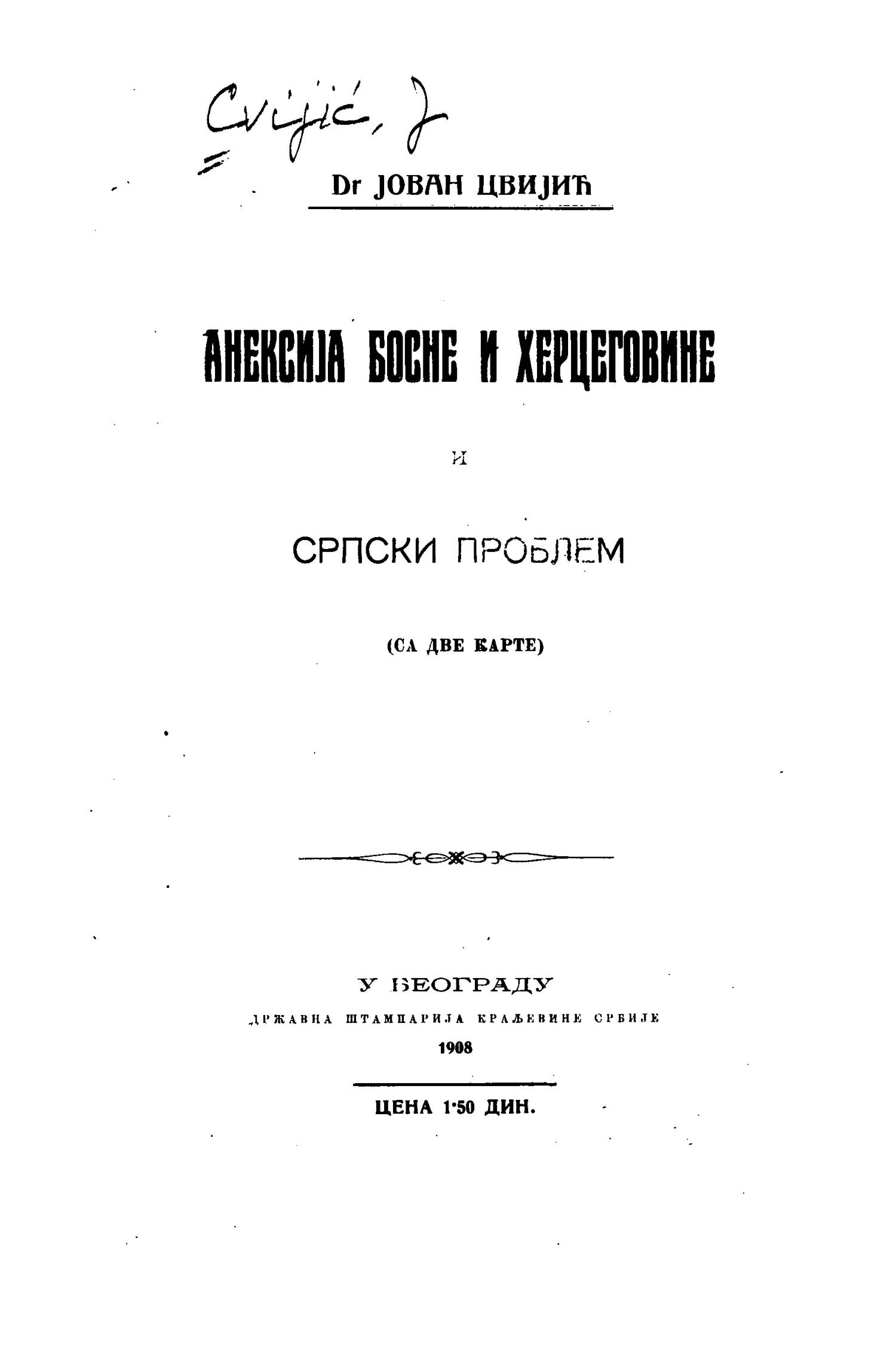By: Jevto Dedijer
In this article I tried to give a well-rounded image about the land and inhabitants of Old Serbia. The materials were mostly taken from Cvijić’s work “The Basic Geography and Geology of Macedonia and Old Serbia”, which due to its voluminosity and a strictly scientific character is not accessible to the wider reading circles. I strived to organise and refine this rich material, strewn over three wide-ranging volumes, as much as needed for an easy accessible article. Besides that I added in unchanged passages from that work in several places. I did this where Cvijić created vivid and clear images under the direct influence of natural phenomena and ethnographic circumstances, these being often characterised by a wealth of observations.
The question of Old Serbia can interest the Serbian public in various aspects. Old Serbia is our ethnographic cradle, the centre of the glorious kingdom and empire of the Nemanjić dynasty and its most cultured part. Besides that those lands could interest us because Kingdom of Serbia would have the fastest and shortest route to the sea via Old Serbia [Serbia and Switzerland were the only two landlocked countries in Europe at this time, translator’s note] and that the Serb kingdoms [Serbia and Montenegro: this was written before the First Balkan war, translator’s note] could come into a direct contact only through these lands. Still, although great importance can not be denied to these aspects, there is one more aspect which I consider more important than the rest. It is a question of establishing normal ethnographic and political relations in certain regions of Old Serbia, especially in Kosovo and Metohija. This question was created by the constant favouritism of the Albanian element by Turkey, which had the aspiration to exterminate the Serbian element in these regions, to tear away the Vardar Serbs from the rest of Serbdom, especially from Serbia and Montenegro and to break apart Serbdom in that way, so it would stop existing as an ethnographic whole. I believe that this question is more important than the rest, or at least as important as the rest, especially due to it not stopping being acute even when the borders of the Serbian state spread out to the sea. I wanted to draw the attention to it with this article. If this thought is clear and the argumentation sufficiently persuasive to the readers, I will consider this article to have lived up to the intention I had when I decided to write it.
I
The name Old Serbia, as a geographic term, started in the nineteenth century under the influence of the state changes which occurred after the liberation of the Principality of Serbia. When the Principality of Serbia, as a separate region, appeared on the maps, geographers had to create a new geographic name for the regions of the medieval Serbian state which were not incorporated into the Principality. At that time the name Old Serbia was applied to the central, southern and south-eastern regions of the medieval Serbia. All of the unliberated regions of the old Serbian state were not named Old Serbia because some received, due to special circumstances, new provincial geographic names in the last four centuries, which entered the geographic maps as such before the liberation of the Principality of Serbia and before the name Old Serbia came to be.
As is true for each new geographic term which covers such an area, Old Serbia also does not have its clearly defined borders. There has been a long discussion where the border of Macedonia ends and Old Serbia begins. Finally the opinion of the experts which gained most traction, championed by Cvijić, is that Old Serbia should be applied to those areas of the old Serbian state which until the liberation of Serbia were called Serbia in our maps and where the populace called its land Serbia and Serbian lands. From that point of view the term Old Serbia encompasses the regions to the south and south-east of Skopje, catching an area from Kratovo under Ovče Polje all the way through Vardar (Ј. Цвијић, “Основе за географију и геологију Македоније и Старе Србије”, volume I, pp. 44-45). If so bounded Old Serbia was to be compared with the borders of the medieval Serbian state, it would most closely align with the southern borders of Milutin’s state or the state which Emperor Dušan inherited (Станоје Станојевић.”Историја српског народа”, Second edition. Belgrade 1910 pp 124 and 140).
In such a region of Old Serbia the following areas would be a part of: 1) to the south of the mountain rage Šara Karadag [name changed to Široka planina, translator’s note]: Ovče Polje, Slavište, Sredorek, Kozjak, Crna Gora (skopska) [Montenegro in Skopje region], Polog with the Tetovo valley, Poreč, Kičevo and Debar regions; 2) to the north of Šara: the eastern Morava basin, Kosovo with Drenica, Prizren region (Gora, Opolje, Has, Srecka, Podrima, Podgor), Metohija with Podgora, Prekoruplje, Plav, Gusinje with the lands around Skadar, Rugovo, Old Kolašin and the region of the Sanjak of Novi Pazar. The size of the region has not yet been measured according to these borders. It is estimated to be around 40 000 km2.
Translated by Books of Jeremiah



